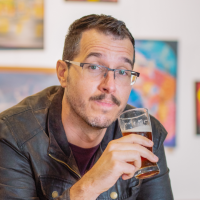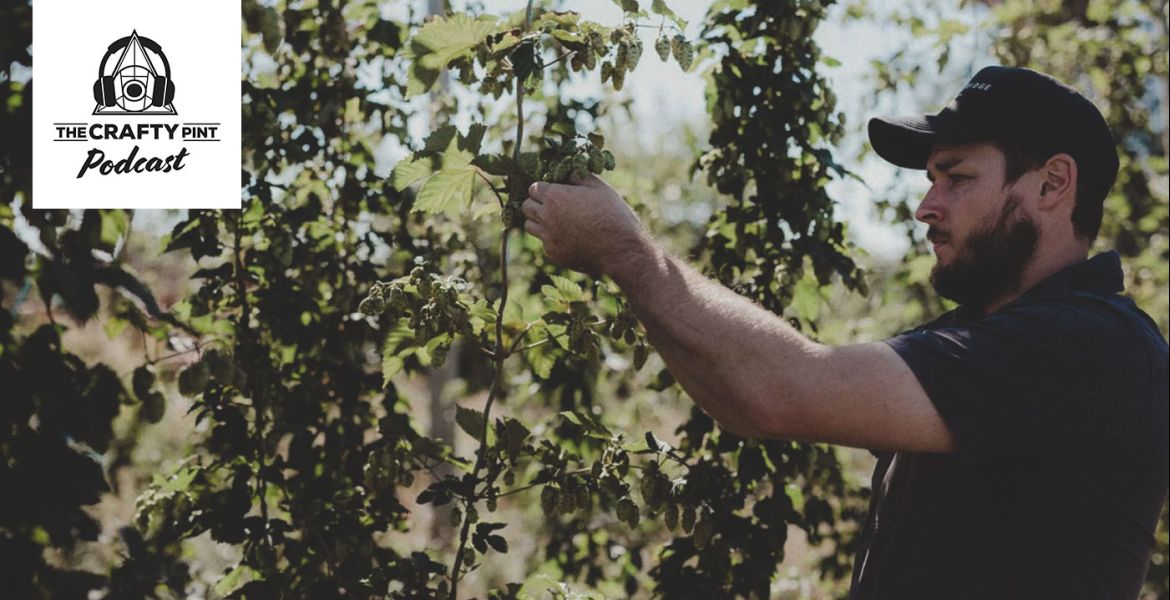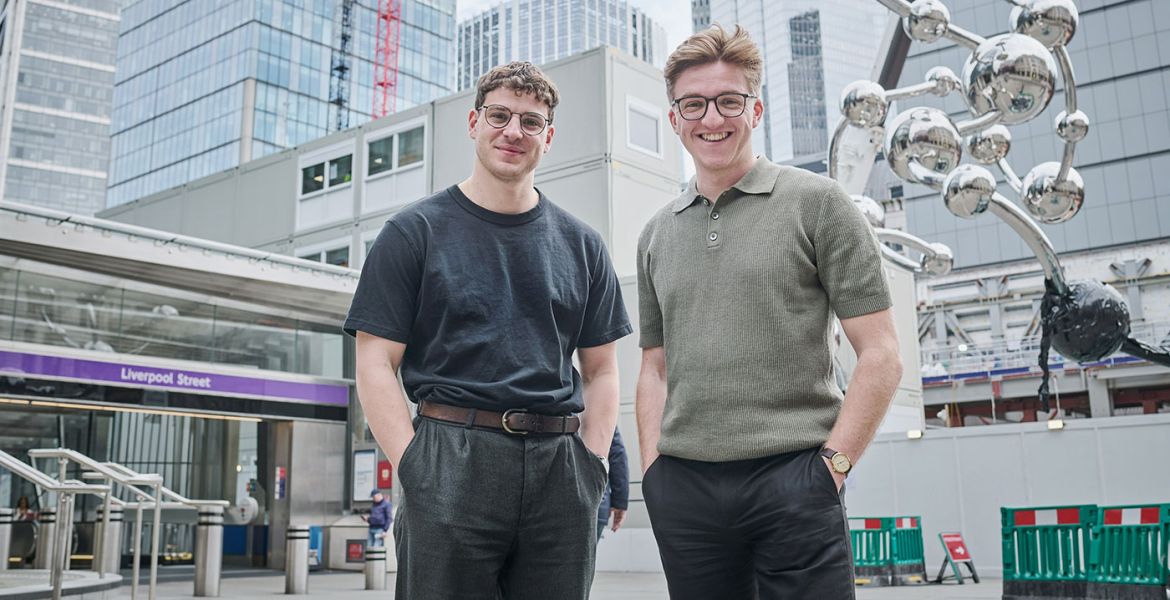Given the never-ending flow of beer releases popping up all over the place – many of them with ingredient-centric names – you’d be forgiven if you missed Wildflower’s Field Work: Mountain Rye earlier this year. But this is a beer that deserves to cut through the noise. Not just because of the good-looking label or the sweet grain and stonefruit flavours, but because the titular ingredient could change the way we farm, and change the way we eat.
Mountain rye (Secale montanum or Secale strictum) is an ancient perennial grain; it’s likely the great grandaddy of domesticated rye, the annual species of rye that you’ve eaten in bread and tasted in certain beers. But unlike domesticated rye, which farmers around the globe grow and sell every year, mountain rye isn’t used as a food crop. When farmers think about it at all, it’s as an easy-growing grass that livestock can forage to get their fill of protein.
So why has Wildflower used this grass seed in beer – not once but twice, with plans to use it more?
To answer that question, we need to look 300km west of Wildflower in Sydney’s Marrickville to a research station in Cowra.
There, a team of researchers for the NSW Department of Primary Industries is developing mountain rye into a food crop that can be used in things like bread, breakfast cereals, whisky, and beer. A crop that would require less labour and fewer resources, and cause far less damage to the environment than the grain crops we’re currently using.
This project’s a big investment. But it’s worth the time and money, because of that key word “perennial.”
What's So Great About Perennials?

Plant a field full of grain. Grow a crop. Rip everything up. Plant the same plant again. Repeat ad nauseam.
If you think that doesn’t sound like a very efficient system… you’re right.
But this is how annual crops work. They need to be resown every growing season, which is labour intensive and uses plenty of fossil fuels for all the machinery needed. They rely on fertiliser and more irrigation, since their shallow root systems can’t reach deep into the soil for nutrients and water. And the time between crops every year means less carbon being put back into the soil, more erosion, and more fertilisers and pesticides running off into waterways.
It’s a way of farming that Matt Newell (pictured above), the research officer heading up the perennial project at the DPI, describes as a “highly disturbed system,” and says that it’s “led to most of the problems that we see in agricultural soil today.”
This inefficient and damaging system is the norm, since pretty much all of our grains are annual species, and grain crops take up around 70 percent of the world’s agricultural land: predominantly corn, wheat and rice, but let’s not forget the barley we use in beer.
Which is why Matt has focused his career around researching perennial grains. While annual plants only last for one year before needing to reproduce (read: the whole plant has to be grown again), perennials are plants that stay in the ground year after year and keep producing. Develop these into grain crops – as Matt and his team are working on – and farmers could keep harvesting them for five years or more, instead of having to rip them out and re-plant seeds every growing season. This means better carbon sequestering, healthier soil and less water pollution, among other things.
And even if sustainability isn’t at the top of your list, perennials grains also help the bottom line for the farmer.
“On top of sustainability, for the producer it’s a reduced cost,” Matt says. “There’s less input, less fertiliser, less water required to grow these species. And more flexibility: the ability to change between grazing and grain production.”
This begs the question of why we farm with annuals instead of perennials in the first place. And the answer is essentially: big seeds. Larger seeds (and more of them) made annual grains more appealing to early farmers since they were easier to identify, easier to farm, and easier to process for food than their perennial counterparts.
“It’s a 10,000-year problem of farming,” Matt says. “When they started the practice of agriculture, all the crops [our forebears] domesticated were annuals, because they were far easier to work with.”
And so, for the entire history of agriculture, farmers haven't been using perennial grains; farming systems around the world have all been built around annual grain crops.
It’s not that people don’t know about perennials; scientists agree they could be a game-changer for sustainability, as well as yield more food for fewer resources. But to invest in a decades-long research project in the hope that maybe some perennial species would prove suitable for farming? Maybe they’d work on farms? Maybe they’d work in bread and beer? That’s too many unknowns for most.
Which brings us back to the Cowra perennial project.
The Rise Of Mountain Rye

Matt Newell and his team had a vision: to develop perennial grains as food crops in Australia.
“What we're trying to do is develop a cropping system based on a natural grassland system that will not only support animal growth, but provide grain that can be harvested – which is what most of the population will consume.”
It’s been done before – notably in the US and China* – but plants grow differently in different climates. So the research team began a search for varieties that could hack it in Australia.
They started with more than 250 potentials and narrowed it down to a handful that showed promise, including the perennial celebrity Kernza from the USA. But, in true Aussie fashion, it was an underdog that stepped up and took them by surprise: a grass used for foraging livestock.
Matt says: “We’d always had this other species in the background – mountain rye – which was mainly just in there as a control plant to compare it to all the other species that we were testing.”
While the US-bred Kernza went reasonably in the trials, mountain rye surpassed it in terms of how well it grew. Although not a native, mountain rye was already adapted to Australian conditions since it’d been used as a grazing crop here for 50 years. Since it also showed surprisingly good seed size and yield for a perennial grass, the team soon realised it was their best candidate for a perennial grain in Australia; rather than just adapting imported grains to our climate, they would domesticate mountain rye instead.
“The results we had testing with mountain rye [showed] it’s pretty close in terms of becoming commercial … it’s probably the one we should be focusing on first.”
But “close” is a relative term. While mountain rye works fine with modern farming equipment and any conventional farm could put it in their rotation, farmers won’t grow these perennial crops unless they’re confident they can sell them. So before the researchers spent years domesticating mountain rye, they needed to see if it could be a viable commercial product. Skeptics would only be satisfied if it was nutritious, tasted good, and worked in things like bread and beer.
“People were saying that you can’t bake with any of these grains, [that they] didn’t have the right function, were only suitable for making things like biscuits.”
The team at Cowra tested mountain rye's nutrition – and it passed with flying colours – but to tick the other boxes they needed to bring in partners to do a different kind of research. Matt approached a group of artisan bakers who were keen to use heritage grains, and asked them if they wanted to try mountain rye. They jumped at the chance, and one of them invited their brewer friend into the mix: Topher Boehm, co-founder of Wildflower Brewing & Blending.
The bakers got baking and the brewer got brewing. And the results?
“The mountain rye showed great utility across a range of products,” Matt says with pride. “Great function and flavour.”
The Beers

For this pilot study in 2021, Wildflower had the opportunity to trial three of the perennial grains in beers.
“And we did. And it turns out they’re bloody great,” Topher says.
Of the three brews, the young Australian wild ale made with mountain rye was the standout. While the perennial only made up 15 percent of the grain bill, and was used in its raw (unmalted) form. Topher says it brought “quite a noticeable flavour at a small quantity, as we have come to expect from things like rye.
“It felt like it was a bit of a winner.”
Topher sees this potency of flavour as one of mountain rye’s strong points, and one that makes it appealing for brewers.
“We can’t get away from using barley in beer,” Topher says. “And so having something that we could use at a smaller percentage that had a large impact – like mountain rye – I felt was a really good opportunity for the brewing industry.”
Which is why, after that first successful trial, Topher returned to Matt and asked if they could get more mountain rye to try something different.
“Let’s malt it. Let’s see what it does.”
While they’d already proven that it worked well as a raw grain, Topher wanted to experiment further since, for most brewers, mountain rye would be more useful and appealing as a malt.
“I feel that was going to be more off-the-shelf ready for the brewing industry.”
With the help of Stu Whytcross at Voyager Malt, who’s spent much of his career researching and developing sustainable malts, Topher got his malted mountain rye.

Thus Wildflower’s Field Work: Mountain Rye (mentioned at the top of this article) came to life, using 33 percent malted mountain rye in the grist. As well as providing more fermentable sugar, the malted perennial offered more body than it had in its raw state, and gave a beautiful spice character not dissimilar to the rye that brewers use now.
In other words: a raging success.
Topher’s keen to make more beers using mountain rye, with the next in line being a bière de garde. But it’s not just niche styles that suit this grain.
“I feel like it would be amazing in a rye based lager,” Topher says. “We have a little ongoing collaboration with Mountain Culture where they make some obscure lagers here on our obscure system, and when this next batch of mountain rye gets harvest and malted … we’ll definitely be putting some rye lagers through that to be able to look at it against a more neutral palate rather than the mixed culture barrel-aged stuff that we do.
“We’ll probably be making a beer with it once or twice a year into the future.”
Wildflower’s trial brews have given Matt and his team a successful proof of concept, showing the perennial grain’s commercial viability: mountain rye, both raw and malted, makes a fine ingredient for the brewing industry.**
And as a bonus of the research, Matt didn’t half mind the beer, either.
“It turned out brilliantly, I thought. Smooth, easy-drinking. [They] called it Field Work, which is quite apt, because it’s something you could drink at the end of a hot day, and quite refreshing.
“For us it’s great to be able to work with people as passionate as Topher is. It gives us that enthusiasm to keep striving to get these perennial grains developed for Australia.”
What's Next For Mountain Rye?

There’s still a long road ahead.
Matt and his team have identified mountain rye as a promising perennial species to take forward as a food crop. But before we reach the point where brewers can buy it as an off-the-shelf product, the researchers have another ten to fifteen years of work ahead of them.***
The next stage is map the population: to spend five years or so growing thousands of mountain rye plants, and collecting data on all of those individual plants regarding things like grain size, grain quality, and yield. Because once they have that data, they can do the really impressive part: selectively breed plants together to capture all the desirable traits and create the best possible specimens. From wild grass to super grain, and no GMOs to be seen.
But setting up a breeding program like this costs money. So, along with scientists everywhere, Matt finds himself saying the dreaded F-word.
“Funding. That’s what’s holding us up.”
Ultimately, the way funding comes is with supply and demand. When more producers want to use mountain rye – in beer, whisky, bread, breakfast cereal – it’ll be easier for the researchers to get funding to improve the grain and get it out on the market.
But even getting the word out to those producers costs money, which is why it’s encouraging that Matt’s project is one of four selected to receive a grant from Good Grain Impact Fund. This fund, set up by Sustainable Table and Stone & Wood, is all about supporting “projects that grow and process grain in ways that consider the health of soil, water, biodiversity and people”.
With the money Matt’s team receives, they’ll be able to set up a demonstration site and run a workshop in November, which Matt says will “bring the farmers, brewers and scientists together in the one room to try and map out this pathway for mountain rye, and hopefully link some growers with some brewers that want to be able to use the grain.
“What we're trying to do is introduce this grain to the supply chain, get a few people growing and then get a few people using it, and then hopefully that will attract enough interest and we can get further investment to go into this full scale development program.”

Topher has nothing but praise for Matt and his ongoing commitment to bring perennial grains to Australian farmers – and, with them, new ways of looking after the soil, the water, and the air.
“He’s really helped us, pretty much single-handedly, for quite some time,” he says. “It’s pretty remarkable that we have a person like him advocating so passionately for these grains.”
As a brewer, Topher loves the innovation possibilities that mountain rye opens up, such as new styles based on Australian grains. But, for now, his eyes are fixed on seeing perennial grains simply become available as a straightforward ingredient, so it’s easy for brewers to make beers with a lower carbon footprint – and for drinkers to choose them.
“I think of carbon a lot like money: you save it, you spend it,” he says. “We can’t go about without spending it somehow, but you also want to save it in other places. So when you have an option to choose a beer with a lesser carbon footprint…”
To him, the choice is obvious. And he believes it’s a choice more and more punters will be making in the coming years.
“There’s nothing to say that in the future the carbon footprint won’t be printed on every can.”
Compared to some of the other producers trialling mountain rye – among them, Stone & Wood and Archie Rose – Wildflower only use a small volume of mountain rye. But their involvement is key at this stage of the project, both with brewing trials and in helping to bring perennial grains to the attention of other producers.
“I’m always keen to be involved,” Topher says. “We have an opportunity with Wildflower to use grains from different places and support the types of agriculture that we think are the future of farming. We’re tiny, but it’s something.
“Everyone has to do what they can within their realm, within their means, to help out.”
You can support the Mountain Rye Perennial Project by donating to The Good Grain Impact Fund; it's tax deductible, and it might change the future of farming and beer in Australia.
Brewers interested in trialling mountain rye can contact Matt at matt.newell@dpi.nsw.gov.au.
* Two big examples are Kernza, an intermediate wheatgrass from the US that reached the commercial stage in 2016, and advanced trials of perennial rice in China, where entire communities are being transformed thanks to the reduced labour requirements for growing perennial rice. To get across what a big deal this is: the success of growing perennial rice in China has been compared to the significance of the moon landing.
**While Kernza has been used in a number of beers, it’s proven difficult to malt, so most brewers are just using it raw. Mountain rye is outperforming Kernza as a malt already – and this is while it’s about ten years behind Kernza, having not yet gone through any of the selective breeding that will improve its characteristics even further.
***For context, it took just over 40 years from when Kernza was identified in 1975 to when it went to market in 2016. So don’t worry, mountain rye is still winning.




















